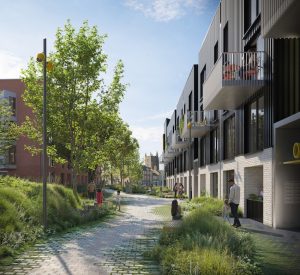West Midlands construction sector worst in the devolved nations claims new report

A NEW report has cast a gloomy picture of the state of the construction industry in the West Midlands – branding the region the worst performing area in the devolved nations.
The report by the Construction Skills Network said the region is set to see output fall by 1.4% per year on average over the five years to 2017, making it not just the worst performing of all the UK regions but also in the devolved nations as a whole.
New work output is predicted to decline at an average annual rate of 2.8%, although repair and maintenance work is forecast to fare better with average growth of 1% per year.
The report predicts growth will return in 2016 and 2017 but will be only moderate. In the meantime, the situation is likely to impact severely on jobs in the sector with cutbacks across the board.
Construction employment is expected to decline by 2.8% per year on average, falling in each year of the forecast period to 153,960 by 2017. This is 30% lower than its recent 2007 peak.
The lagged effect between output and employment means that job shedding is likely to continue in the region for some time after output returns to growth in 2016.
Employment will decline across all 26 sector occupations between 2013 and 2017, with the most marked falls expected for surveyors (-25%) and scaffolders (-23%). In contrast, civil engineering operatives and plant operatives are forecast to see the weakest declines.
The Annual Recruitment Requirement (ARR) for the West Midlands is 830, one of the lowest of the regions and devolved nations in absolute terms. It is equivalent to just 0.5% of base 2013 employment, substantially weaker than the UK figure of 1.2%. Wood trades and interior fit-out is the trade occupation with the largest ARR – at 150 it is equivalent to 18% of the region’s total ARR.
The public non-housing sector is forecast to be the worst performing in the region over the period, with an average annual decline of 10.9%. This is stronger than the UK decline of 5.8% per year on average. The region is said to have benefitted heavily from the early waves of the Building Schools for the Future (BSF) programme and thus output in the sector has further to fall before returning to more ‘normal’ levels.
Public spending cuts will also impact on the public housing sector over the forecast period, with output expected to fall by 1.7% per year on average. The region benefitted from £622m of funding under the 2008-2011 National Affordable Housing programme but will receive funding of just £190m to build 9,047 units over the 2011-2015 period.
“This will inevitably lead to falling output in the shorter term, but there is likely to be some boost to output towards the end of the forecast period when registered providers have adapted to the new ways of raising funds from private sources,” states the report.
The best performing sector is forecast to be private housing one with average annual growth of 1.7% over the period to 2017. The sector will benefit from gradually improving economic conditions over the next few years, which will stimulate demand for housing as concerns over unemployment abate.
Industrial construction output will also increase in each year, on average, over the five years to 2017, albeit by only a modest 1.1%. In the shorter term the sector will benefit from work on the new Jaguar Land Rover engine plant in South Staffordshire, which is due to open in 2014, before improving economic conditions will provide some incentive for investment in new facilities elsewhere.









